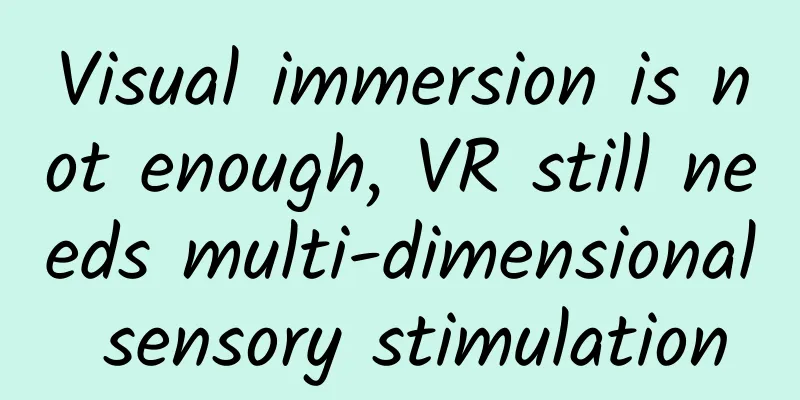The launch of the Webb telescope has been postponed again. Why are we so looking forward to it?

|
According to the latest announcement from the National Aeronautics and Space Administration (NASA), the launch of the long-awaited space astronomical observation instrument, the James Webb Space Telescope (JWST), has been postponed again. It is expected to be launched on December 24, 2021 (Eastern Time) at the European Space Launch Center in Kourou, French Guiana using an Ariane V carrier rocket, two days later than originally planned. It will travel 1.5 million kilometers and enter the halo working orbit of the Lagrange L2 point. After testing, it will carry out deep space exploration, mainly observing in the mid-infrared band, which may reveal the deep mysteries of the birth and evolution of the universe. The Webb telescope is seen as the successor to the Hubble Space Telescope. The achievements made by the Hubble telescope in the past 30 years have already excited scientists, and people are even more looking forward to the Webb telescope. Ancient astronomical observations Astronomy is one of the oldest disciplines. For thousands of years, people have been passionate about exploring and understanding the mysteries of the vast universe. In the long-term and unremitting exploration process, people gradually elevated astronomy from superstition to a science. The most basic method of studying astronomy is observation, which can only be done with the naked eye for a long time. People have built many buildings similar to observatories on the ground, such as the prehistoric Stonehenge in the UK and the Mayan pyramids, which are believed to have been built by ancient people to observe celestial phenomena. Stonehenge, England Mayan Pyramids With the advent of civilized society, astronomical observation instruments have been continuously improved with the development of science and technology. The ancient Chinese gnomon, sundial and clepsydra were important timekeeping devices for astronomical observation. Ancient Chinese astronomers invented many instruments for observing the stars. The most important of these was the armillary sphere, which was the most advanced astronomical observation tool in the world before the invention of the telescope. Armillary Sphere of the Ming Dynasty (original) The Water-Powered Statue and Mirror is a large astronomical instrument designed and manufactured by Su Song, Han Gonglian and others in the Song Dynasty. It cleverly combines the armillary sphere for observing celestial phenomena, the armillary sphere for demonstrating celestial phenomena and the time-telling device, making it an outstanding creation of ancient China. The Water-Powered Statue and Mirror can accurately tell time, and its power device "may be the direct ancestor of the astronomical clock in medieval Europe." Water-powered instrument platform The armillary sphere has been continuously developed and improved during its use. The simple instrument designed and developed by Guo Shoujing in the Yuan Dynasty installed the horizontal coordinates and the equatorial coordinates separately, which not only has the effect of simultaneous measurement, but also avoids the disadvantage of mutual obstruction. It is an important contribution to the history of astronomical instruments. Restoration of the Jianyi by Guo Shoujing Along with the need for astronomical observation, many observation instruments were invented in European history, such as gnomon, clepsydra and other timekeeping devices. Greek astronomers combined observation with calculation with the help of mathematical tools when conducting astronomical observation and research, and achieved quite outstanding results. Ptolemy made instruments similar to the armillary sphere for measuring longitude and latitude - an astrolabe and an angular distance meter. Using observational data and theoretical deductions, he wrote the "Almatis", which is regarded as an encyclopedia of ancient astronomy. The astronomical instrument commonly used by Danish astronomer Tycho Brahe was a large equatorial armillary sphere that he designed and supervised personally. The error of the position of celestial bodies measured by it was less than 2 arc minutes, almost reaching the limit of the accuracy of naked eye observation. The large equatorial armillary sphere designed by Tycho Tycho carefully designed and manufactured many large and precise astronomical observation instruments, the largest of which was a quadrant with a diameter of nearly 12 meters and extremely high precision, which was later called the "Tycho Quadrant". It was with Tycho's observation data and the concept of celestial harmony that the German astronomer Kepler made an important discovery in the history of astronomy - the three laws of planetary motion. The giant equatorial ring designed by Tycho Astronomical observations since modern times The greatest inventions in modern astronomy are the mechanical clock and the telescope. Mechanical clocks were first used in medieval Europe as large clocks in churches or towers, which were often only accurate to the time. After entering the 15th century, with the invention of winding power, mechanical clocks became increasingly accurate and miniaturized. After Galileo discovered the law of the simple pendulum, Huygens invented the pendulum clock, which reduced the clock timing accuracy error to 1 minute. After further improvements, the clock's error was less than 10 seconds per day. The invention of the telescope also has a long history. In the Middle Ages, myopia glasses appeared in Europe, and the eyewear industry developed rapidly. In 1608, Hans Liebig accidentally discovered that he could see distant objects clearly with two lenses. Inspired by this, he made the first telescope. After improvements, Galileo invented a 40x binocular telescope. Using this homemade telescope, he discovered four satellites of Jupiter, providing strong evidence to prove the heliocentric theory. Galileo's telescope In order to reduce the chromatic aberration of the refracting telescope, Huygens made a telescope with a tube length of nearly 6 meters to observe the rings of Saturn, and later made a telescope nearly 41 meters long. To eliminate aberration, Newton ground a concave spherical mirror with a diameter of 2.5 cm and installed an objective lens at the end of a 15-cm-long lens barrel. This was the first reflecting telescope he made, and the image produced could be magnified 40 times. Newtonian telescope In 1672, Cassegrain invented the Cassegrain telescope, which is a reflecting telescope composed of two reflecting mirrors. Usually, there is a hole in the center of the primary mirror, and the image is formed behind the primary mirror. The focus is called the Cassegrain focus. The invention and improvement of the telescope is considered a revolution in observational astronomy. Later, scientists continued to increase the magnification of telescopes by increasing their apertures and improving the quality of astronomical observations. In 1772, William Herschel ground the first reflector with a diameter of 15 cm and made a 2.1-meter-long Newtonian reflecting telescope that could magnify 40 times. He used this telescope to view the Orion Nebula and clearly observed the rings of Saturn. In 1781, Herschel accidentally saw a celestial body with a round surface through a telescope. Further observation revealed that this celestial body was orbiting the sun. It was later confirmed that it was a new planet 2.8 billion kilometers away from the sun, and was later named Uranus. Herschel built hundreds of telescopes in his lifetime, and in 1786 he built the largest telescope. On the first night he used this giant telescope to observe, he discovered two new satellites of Saturn. He later made great achievements in observing the Milky Way, including making the most complete star catalog in history and proposing for the first time the idea that the Milky Way has a finite size. Herschel's giant telescope In the 18th and 19th centuries, the performance of astronomical telescopes and their terminal equipment and accessories became better and better, and the accuracy of astronomical measurements increased, leading to a series of major discoveries. In 1814, Fraunhofer made the first spectroscope to observe the sun and discovered the sun's spectral lines. The names he gave to the main spectral lines, such as A, B, C, and D, are still in use today. In 1859, Kirchhoff published the basic law of spectroscopy, Kirchhoff's law, pointing out that there are many elements common on Earth in the sun. In 1869, Ångstrom published the wavelengths of 1,000 spectral lines in the solar spectrum and named the wavelength unit he established after his surname (1 angstrom = 0.1 nm = 10-10m). Between 1886 and 1895, Roland published a new spectral table containing the wavelengths of 14,000 spectral lines from the ultraviolet region to the red light region. In addition to the solar spectrum, people also began to pay attention to the stellar spectrum. In 1863, Sage used a low-dispersion spectrograph to observe stars and classify their spectra. A few years later, he published a star catalog containing 4,000 stars, dividing stellar spectra into four categories, and conjectured that these four categories were closely related to temperature. In 1885, Pickering first used an object end prism and photography to take a spectrum photo of the Pleiades, thus starting a new era of stellar spectrum classification. Using stellar spectrum analysis, scientists discovered a new element, helium. The use of telescopes and spectroscopes to study celestial bodies, especially stars, accumulated technology and experience for the great development of astronomy in the 20th century. In 1868, Hagens made detailed measurements of the positions of stellar spectral lines and discovered the tiny spectral line displacement phenomenon caused by the Doppler effect, from which he measured the apparent velocity of stars approaching or leaving us. At the end of the 19th century, the Harvard Observatory, under the leadership of Pickering and Cannon, classified stars based on objective prism spectral observations, and successively published the Henry Draper Catalog (HD Catalog) and its supplement (HDE Catalog), which contained a unified classification of the spectra of 272,150 stars, laying the foundation for the establishment of the stellar surface temperature series. From 1905 to 1913, Hertzsprung and Russell respectively drew the magnitude-color index diagram of the Milky Way star cluster and the absolute magnitude-spectral type diagram of stars at known distances, from which they discovered the law of star distribution. Russell also proposed the evolution trend of stars on the diagram. Later generations called the spectrum-luminosity diagram of stars the Hertzsprung-Russell diagram. In 1937, Kuiper discovered that the differences in the positions of some galactic clusters on the Hertzsprung-Russell diagram could be explained by their different ages, indicating that the Hertzsprung-Russell diagram is an effective tool for studying stellar evolution. In 1938, Bethe pointed out that the energy source of main sequence stars is the thermonuclear reaction of hydrogen into helium. He successfully explained the mechanism of stellar energy generation and laid the foundation for understanding the evolution of solar-type stars. From the late 1950s to the 1960s, scientists were able to describe the evolution of stars of different masses in the hydrogen burning phase before the main sequence. Astronomical observations show that stars originate from interstellar dark clouds, and due to accretion and contraction, hydrogen nuclear fusion begins to occur to form protostars (or star embryos or star fetuses). These works not only explain the source of the huge energy of stars, but also depict the process of stellar evolution and its later stages. Humanity's knowledge and understanding of the formation and evolution of stars was a major achievement in astronomy in the early 20th century. Herschel proposed the concept of a flat, finite-sized Milky Way. In the early 20th century, Kapteyn established a Milky Way model with the solar system at its center and a diameter of 40,000 light years through statistical studies of star counting and luminosity functions. In 1918, Shapley analyzed the apparent distribution of the then known globular clusters and estimated their distances based on the period-luminosity relationship of Cepheid variables. He concluded that the Milky Way is a lens-shaped system of stars and nebulae with a diameter of 300,000 light-years and a thickness of 30,000 light-years. Shapley Curtis believed that the observed spiral nebula was a star system far outside the Milky Way and similar to the Milky Way. On April 26, 1920, the National Academy of Sciences of the United States held a famous debate in Washington, known as the "Shapley-Curtis Debate." Later observations showed that Curtis's views were basically correct and that the Milky Way was far from the center of the universe. Curtis From 1923 to 1924, Hubble used the 254-centimeter reflecting telescope at the Mount Wilson Observatory to take spectral photographs of the Andromeda Nebula and M33, decomposing their edges into individual stars. After analyzing the brightness of a group of Cepheid variables, he concluded that these Cepheid variables and the nebulae in which they are located are hundreds of thousands of light-years away from us, far exceeding the scale of the Milky Way at the time, and must therefore be located outside the Milky Way, that is, they are indeed huge celestial systems outside the Milky Way - extragalactic galaxies. Hubble, the "Father of Modern Cosmology" In 1929, Hubble discovered, through statistical analysis of more than 20 galaxies whose distances had been measured, that the redshift of spectral lines of extragalactic galaxies is directly proportional to the distance of the galaxies - Hubble's Law. If redshift is the Doppler effect of the recession motion of celestial bodies, then the redshift-distance relationship means that galaxies are generally receding, and the space in which they are located is expanding as a whole. The expansion of the universe is one of the results expected by relativistic cosmology. Hubble is conducting astronomical observations Lemaître proposed the concept of cosmic expansion in 1927 and the prototype of the cosmological hypothesis, the primordial atom, in 1931. According to this hypothesis, the universe originated from the radioactive fission of an atom and has been expanding ever since. In 1930, Eddington linked Lemaître's hypothesis with Hubble's law and called the universe an expanding universe. In 1932, Lemaître further proposed that the universe we observe today was formed by the explosion of a huge primordial fireball. Lemaitre By the late 1940s, scientists had generally accepted that the sun's huge energy came from thermonuclear reactions. In 1948, George Gamow linked the theory of cosmic expansion, the movement of elementary particles and general relativity, and proposed the hot big bang cosmology (also known as the Big Bang cosmology). He believed that the universe originated from a big bang of a high-temperature, high-density "primordial fireball". When the Big Bang theory was first proposed, few people paid attention to it. It was not until 1965, when Penzias and Wilson of Bell Telephone Laboratories in the United States discovered the 3K microwave background radiation (also known as the cosmic background radiation), that the Big Bang theory became the most influential theory. George Gamow These important discoveries and theories are basically based on observation data and analysis from ground-based observatories. In addition to optical telescopes, ground-based observatories are also equipped with observation equipment other than visible light. Both celestial polychromatic photometry and celestial spectrophotometry are based on spectral theory and are the most effective methods to understand the apparent motion of celestial bodies, properties of stellar populations, physical parameters and chemical composition. In 1910, Wilson and others measured the temperature of stars and calculated their diameters. In the 1940s, radio astronomy observations emerged, leading to the four famous discoveries of quasars, pulsars, cosmic background radiation, and interstellar organic molecules. Astronomical observations in the radio wave band have become a routine project in the observation and research of the universe, galaxies and stars. After the 20th century, astronomical telescopes became larger and larger, and their apertures became larger and larger. By the beginning of the 21st century, the world's largest telescope had an aperture of more than 10 meters. The mirror of the Canary Islands Telescope on Spain's Canary Island has a diameter of 10.4 meters and is composed of 36 customized hexagonal mirror components. Canary Telescope Astronomical photos taken by the Canary Islands Telescope The summit of Mauna Kea in Hawaii is 4,200 meters above sea level, which can largely eliminate the influence of ground light and dust. The Keck telescope located on the top of the mountain consists of two exactly the same telescopes, Keck I and II, each consisting of 36 hexagonal mirror components. The overall mirror diameter is 10 meters, and the aperture of each mirror is 1.8 meters. Keck Telescope Keck Telescope photo of the Andromeda Galaxy The Southern African Large Telescope (SALT) is the largest single optical telescope in the Southern Hemisphere, consisting of 91 hexagonal mirror components with an effective mirror diameter of 10 meters. The telescope can detect the faint light of the moon, as faint as candlelight. SALT Telescope, South Africa These large astronomical telescopes have played a huge role in helping scientists to observe the universe in depth. In addition to being equipped with large-aperture telescopes for visible light observations, they are often equipped with a variety of observation instruments that can observe information in other light bands emitted by stars and galaxies. The pace of building larger ground-based telescopes has not stopped. In 2020, eight organizations including the Carnegie Institution of Washington, USA, and the Australian National University plan to cooperate in building the Large Magellan Telescope (abbreviated as GMT). The construction site is Las Campanas Observatory in Chile, and it is scheduled to be put into use in 2022. The GMT's 21.4-meter-equivalent primary mirror consists of seven 8.4-meter-diameter sub-mirrors, with a budget cost of $625 million. Its overall resolution is equivalent to that of a single 25-meter primary mirror, making it 4.5 times more powerful than the largest existing optical telescope, and its imaging clarity will be 10 times that of the Hubble Space Telescope. Large Magellan Telescope primary mirror GMT focuses on visible light observations and is supplemented by infrared observations. After its completion, it will be responsible for exploring the formation of stars and planetary systems in the universe, the mysteries of dark matter, dark energy and black holes, and the origin of the Milky Way. However, GMT still has problems in exploring the origin of the universe and observing more distant galaxies. The main reason is that the thick atmosphere, dust, artificial light and various living and non-living objects on the earth's surface will cause great interference to the infrared, ultraviolet, X-rays and gamma rays emitted from the depths of the universe. Therefore, astronomical satellites in space and ground-based observatories complement each other and work together to explore the mysteries of the universe. Space Astronomy Era With the Soviet Union launching the first artificial earth satellite, mankind entered the space age. Spacecraft provided a new means for astronomical observation, and the rise of space astronomy is considered the second revolution in the field of astronomical observation. There are two main types of spacecraft used for astronomical observation: astronomical satellites and deep space probes. The latter are mainly used to explore celestial bodies in the solar system. Among all types of probes, the most common ones are aimed at the moon and Mars. At present, humans have achieved soft landing on the moon and even direct manned lunar landing, and have brought lunar samples back to Earth through lunar landing and automatic sampling by unmanned probes. Chang'e 5 lunar sampling Mars exploration is in full swing. The United States, the Soviet Union (Russia), China, Europe and other countries have carried out a total of 47 Mars exploration missions, nearly 15 of which have achieved soft landings on Mars, and a total of 8 Mars rovers have been brought there. The sample return mission from Mars will be completed soon, and the day of manned Mars flight will be realized in the near future. China's Zhurong Mars Rover To date, various countries have developed and launched more than 300 deep space probes. These probes carry various instruments. Some of them fly past the target celestial bodies at close range, some enter the orbit of the target celestial bodies, and some land directly on the target celestial bodies. The observation and research of celestial bodies are becoming more and more in-depth. Voyager 2 probe Galileo Jupiter probe Cassini-Huygens Saturn Probe For thousands of years, the information obtained from astronomical observations has mainly come from the visible light band, but visible light only occupies a very small part of the spectrum, so much other information emitted by celestial bodies has been ignored. In the early 1930s, Jansky and others discovered cosmic radio waves (i.e. radio waves) from outside the Earth. After the 1940s, the development and improvement of radar promoted radio observation. Hay, Bolton, Ryle and others successively explored the radio sky, thus establishing radio astronomy. A typical radio telescope Over the past 80 years, radio telescopes have developed from parabolic antennas with a diameter of only a few meters to 305-meter fixed parabolic antennas, and then to modern aperture synthesis radio telescopes and very long baseline interferometers. The Arecibo radio telescope is 305 meters in diameter. Through the atmospheric radio window, we can explore the activity of the core of the Milky Way, depict the spiral structure, discover more than 50 kinds of interstellar molecules, more than 100 supernova remnants, more than 300 pulsars, thousands of radio galaxies and quasi-stellar radio sources, detect the isotropic cosmic microwave background radiation, and use radio methods to try to contact possible extraterrestrial civilizations. The 500-meter FAST radio telescope in Guizhou, China Radio telescope array In the 1960s, with the advent of the space age, astronomy broke through the confinement of the Earth's atmosphere and explored the universe outside the atmosphere. Astronomy began to become a full-band cosmic science, allowing scientists to observe celestial phenomena in the depths of the universe tens of billions of light years away. Among all the electromagnetic wave bands, gamma rays have the shortest wavelength and the highest energy, followed by X-rays. Using gamma rays and X-rays to detect high-energy bands is of great significance for the study of black holes, galaxies, pulsars, neutron stars, supernovae and massive stars. Ultraviolet light is a wavelength between visible light and X-rays, and is sometimes divided into ultraviolet, far ultraviolet, and extreme ultraviolet. Ultraviolet observations are very important for the study of large stars, white dwarfs, and central stars of planetary nebulae. They are also of special significance for the study of interstellar matter, and are usually used to study stellar evolution, nebulae, interstellar matter, astrochemical composition, etc. The energy of infrared light is lower than that of visible light and is emitted by cooler light sources, including cool stars, nebulae and redshifted galaxies. Infrared sources include stars, ionized hydrogen regions, molecular clouds, galactic nuclei, planetary nebulae, galaxies, quasars, etc. Through infrared observations, we can understand the origin, evolution and even death of stars. Microwaves are mainly used to measure the cosmic microwave background. Through microwave observations, we can understand the synchrotron radiation, free radiation and rotating dust of the Milky Way, as well as extragalactic compact sources and galaxy clusters. Typical targets for radio wave observations include supernova remnants, pulsars, gravitational lensing phenomena, and starburst galaxies. Through observations in various frequency bands, we can study more celestial bodies and astronomical phenomena, including the childhood, middle age, old age and death of stars; the birth and evolution of galaxies; special celestial bodies such as quasars, neutron stars, white dwarfs and black holes; gamma-ray bursts and starbursts, etc. By observing various celestial bodies and astronomical phenomena, it is possible to uncover astronomical mysteries such as stellar evolution, black holes, neutron stars and white dwarfs, quasars, the origin and collision of galaxies, the age of the universe and the early universe. Electromagnetic spectrum To date, various countries have launched about 90-100 astronomical satellites, most of which are located in Earth orbit. Some are launched into Lagrange points, heliocentric orbits or other special orbits due to special observation environment requirements. The observation instruments carried on the satellite may cover multiple electromagnetic bands, but one band is the main one, so these astronomical satellites are named after this band, such as X-ray satellite, gamma-ray observatory, infrared observatory, extreme ultraviolet observatory, etc. Many astronomical satellites are also named after famous scientists, such as Einstein satellite, Roentgen satellite, Herschel Space Observatory, Compton Observatory, Hubble Space Telescope, etc. View some astronomical satellite images ↓↓↓ Vera satellite detects first cosmic gamma-ray burst SAS-2 Gamma-ray Observation Satellite High Energy Astrophysics Observatory-3 (HEAO-3) Compton Observatory Swift Gamma-Ray Burst Satellite Composite image of the M101 galaxy in far ultraviolet and visible light taken by the Swift satellite Fermi Gamma-ray Telescope The gamma-ray burst GRB 130427A observed by the Fermi satellite before and after its outbreak OAO-3 Copernicus X-ray Observatory Satellite ANS-1 astronomical satellite Antelope 5 X-ray satellite HEAO-2 Einstein Observatory Map of X-ray sources from the Albert Einstein Observatory European X-ray Observatory Infrared image of Andromeda taken at ISO Wide-field Infrared Survey Explorer (WISE) Trifid Galaxy imaged by WISE Herschel Space Observatory Herschel Space Observatory in orbit Herschel Space Observatory reveals details of star formation The Rosette Nebula from the Herschel Space Observatory Herschel Space Observatory photographs the Andromeda Galaxy M31 More than half a century has passed since attempts to launch astronomical satellites began in the mid-1960s. Observations using astronomical satellites eliminate adverse interference from the Earth's atmosphere, dust, artificial light, radio waves, etc. The cosmic information received is stronger, purer, and more concentrated. Therefore, it is possible to obtain important information that is difficult to obtain with ground-based observatories and telescopes. This is of great significance for more in-depth revelation of the mysteries of the universe. In exploring the origin of the universe and the formation and evolution of galaxies, we have to mention the outstanding contribution made by the Hubble Telescope. In fact, the Webb Telescope is also regarded as the successor of the Hubble Space Telescope and we have high hopes for it. Articles related to the Hubble Space Telescope will be published soon, so stay tuned! Author profile: Li Chengzhi, professor and doctoral supervisor at the Institute of Advanced Humanities and Social Sciences, Beihang University. Source: Science and Technology Herald |
<<: Will the moon fall? What is the probability? What would happen if it really falls?
Recommend
Baidu Wenku money-making project! Dual-mode gameplay brings you a monthly income of 8,000+
In the previous project, we mainly talked about s...
Hollywood actress' Tesla car caught fire, electric car battery safety questioned again
On Friday, June 16th, US time, McCormack, an Amer...
A reusable user growth method
Nowadays, user growth is becoming increasingly di...
Every drop of alcohol you drink is damaging your brain!
【Written at the end】 In 2018, a study in The Lanc...
What else can smart TVs do after video content?
Stimulated by the arrival of the Internet era, th...
To users who have difficulty hailing a taxi: Stop cursing. You are actually paying for the new policy.
"The online ride-hailing service has crashed...
“Justice League” that can save Android devices from lag is here!
The "Android Unified Push Alliance", wh...
App Operation丨Apple Cleaning Free List Top 200! More than 40 games were removed from the list
Clearing words, locking rankings , removing from ...
China's new energy vehicle sales fell 56.4% in Q1 2020, but Tesla's sales in March exceeded 10,000 vehicles
Affected by factors such as the epidemic and the ...
How does WeChat Reading achieve user fission?
More and more people in the circle of friends hav...
User fission strategy: 10 methods of “using old customers to bring in new customers”!
Advertising traffic is too expensive? SEM prices ...
The complete process of an email marketing promotion
6 steps: 1. Planning Purpose - Is it to verify th...
Product promotion is not effective, how to solve it?
Many friends asked, what should I do if I have tr...
Can soap kill bacteria? Can rolling your eyeballs improve myopia? What you think is common sense may be false.
Source: Curious Doctor Reviewer: Tang Qin, Direct...
Does eating sweet potatoes make you fat or lose weight? What is the difference between sweet potatoes and purple potatoes? Finally it's clear
How many people can resist the fragrant sweet pot...









